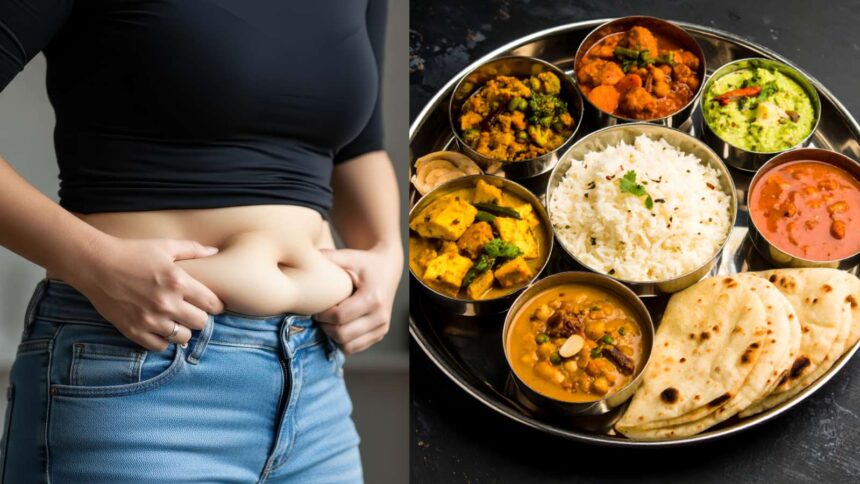An ICMR research discovered that Indian diets present 62% of the best energy from carbohydrates on this planet. Together with low protein, massive intakes of white rice, wheat, sugar and saturated fat is a rise in circumstances of diabetes and weight problems.
India has witnessed a quiet however stunning change in its consuming habits. From plates loaded with polished rice and wheat chapatis to elevated sugar consumption, the nation’s eating regimen has been more and more dominated by refined carbohydrates and unhealthy fat. A nationwide research by the Indian Medical Analysis Council (ICMR-Indiab) revealed in Nature Drugs reveals that 62% of the day by day energy of most Indians come from carbohydrates. What’s extra regarding about that is that these energy are sometimes of poor high quality and low vitamins. This discovering exhibits a troubling hyperlink between the Indian eating regimen and the sudden rise in diabetes, weight problems and metabolism dangers.
Carbohydrates account for 62% of Indian eating regimen
The ICMR research, which examined adults over Rs 12,000 in 36 states and Union territories, highlights a outstanding dietary imbalance. On common, 62% of day by day energy come from carbohydrates, a lot larger than the worldwide advice of 45-55%. Worse, most of those are low high quality sources of sources resembling white rice, crushed wheat and sugar additions. Regional variations additionally attracted consideration–Rice dominates within the south, east and northeast, whereas wheat is extra widespread in northern and central India. In distinction, nutrient-rich millet stays a staple in solely three states, resembling Karnataka, Gujarat and Maharashtra, regardless of linking with higher glycemic management and better fiber content material.
Sugar consumption far past secure limits
Sugar consumption is one other purple flag. The World Well being Group (WHO) advises that including sugar mustn’t exceed 5% of whole energy, however 21 Indian states have exceeded this threshold. Excessive sugar consumption is related to not solely weight achieve, but additionally insulin resistance, fatty liver, and dental issues. Packaged drinks resembling fruit juice, soda, and candy tea quietly contribute to this drawback. Nevertheless, lowering sugar in a day by day eating regimen can considerably cut back the chance of prediabetes, particularly in youthful adults, who’re more and more displaying early indicators of metabolic illness.

An excessive amount of saturated fats, too little wholesome fats
Though total fats consumption in India stays inside the advisable limits, the standard of fats is a priority. This research discovered that saturated fats consumption exceeds secure ranges in virtually all states besides Jharkhand, Chhattisgarh, Arunachal Pradesh and Manipur. Widespread sources embody ghee, butter, palm oil and fried snacks. In the meantime, wholesome fat resembling nuts, seeds and fish omega-3 fatty acids are consumed in minimal quantities. Specialists clarify that fats typically will get a nasty fame, however all fat will not be dangerous. Changing saturated fat with more healthy fat improves coronary heart well being, reduces ldl cholesterol and helps in weight administration.
Protein deficiency
Maybe some of the worrying elements is the shortage of top quality protein within the Indian eating regimen. Many diets are excessive in carbohydrates, so protein performs a secondary function. Dr. RM Anjana, president of the Madras Diabetes Analysis Basis and lead writer of the research, highlighted {that a} eating regimen with excessive carbohydrates and low protein dangers for thousands and thousands. Plant-based proteins resembling legumes, lentils, soybeans and dairy merchandise will not be consumed, however animal protein consumption stays restricted in some areas. This research means that changing solely 5% of day by day energy from carbohydrates with plant or dairy proteins can considerably cut back the chance of diabetes and prediabetes.
More healthy alternate options can cut back danger
Specialists agree that swapping wheat for wheat or including millet just isn’t sufficient. A wider shift is required, lowering whole carbohydrate consumption, balancing eating regimen, protein and fiber, and changing saturated fats with more healthy choices. Small and constant adjustments, resembling lowering extra sugar, resembling extra pulses, nuts, and dairy merchandise, or attempting millet-based recipes, could make an enormous distinction.











